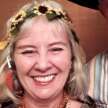Silly Simon, Psychedelics and Experimentation in the '60s
The Harvard Psilocybin Project

It isn’t often that an expert on religion is willing to open up about their early experimentation with drugs. It wasn’t a surprise to me that this author was only one of many people who experimented in the sixties.
I was one of them, though I didn’t participate in any drug trials.
And I didn’t write a paper that was published at Berkeley — the California Law Review.
The World’s Religions was written by Huston Smith, a leading authority on the history of religions. He informed and inspired a generation to be more tolerant and inclusive in their attitudes toward other cultures.
Smith’s early exposure to psychedelic drugs in the early 1960s provided him with experiences that he said brought him close to God. Later involvement with mind-altering substances included one in 1962, where Smith participated in a blind trial and received psilocybin mushrooms.
Silly Simon is what we used to call Psilocybin mushrooms.
He was certain that he had a personal experience with God.
His response to that gift of connection was to be mindful of God’s love and to spend his life sharing it with the rest of the world.
Timothy Leary was a psychologist, and writer who was known for promoting the exploration of the possible use of psychedelic drugs in various therapies. He was one of the people who ran the blind trial.
Leary was a Harvard professor with Richard Alpert. Together they started the Harvard Psilocybin Project. Richard Alpert later changed his name to Ram Dass and became a famous spiritual leader.
An ordained Methodist minister, Huston Smith preferred teaching and was actively involved with a Hindu society in St Louis. He studied Zen for ten years, studied metaphysical Hinduism (Vendanta) with Swami Satprakashananda for another ten, and taught Buddhism at MIT.
He lectured for the National Educational Television network (early PBS), wrote more than a dozen other books, and introduced the Dalai Lama to Americans.
The World’s Religions is an easy to read summary of seven historical religions as well as the primal religions. Smith begins with an introductory chapter that provides notes about his intentions for the book. He asserts that The World’s Religions is not intended to be a textbook but is intended to provide an honest, impartial view of the ideas that are the basis of each religion described.
The seven historical religions covered are Hinduism, Buddhism, Confucianism, Taoism, Islam, Judaism, and Christianity. Each chapter outlines the essential beliefs and practices of the religion with a few insights on the similarities and differences between them.
His intent in writing this book was not to compare the religions but to educate and inform people about different cultures and beliefs about each other.
His chapter on the Primal religions was added in a later version of this text and it was inspired by the extensive time he spent with the Onondaga people near his home in Syracuse.
Through this contact, he discovered the rich tradition of indigenous peoples of the world.
He discusses the overall importance of the oral tradition of story-telling, the importance of the natural world and a person’s place within it, and the widespread existence of the shaman as healers and spiritual guides.
Smith identifies the Australian aborigines as being the closest to the original inhabitants of the earth. The focus of their lives is ritual, participation as they become the historical figures in the Dreamworld.
-
I found The World’s Religions to be readable because it is not a typical textbook. It’s written in a conversational tone, as Smith tells what he finds interesting about each religion. He clearly states in the first chapter, ‘Point of Departure’, that he is writing about values and so he does not provide a full account of the religions.
Instead, he provides a view of the world’s religions at their best, including the beliefs and truths while excluding religious institutions and their inherent problems.
He has tried to write from the point of view of the origin of the religion, for example; India for Hinduism and Buddhism. He gives information about the cultures of the religions as well as the lives of the founders or primary figures.
The last chapter is a discussion of the relationships between religions, and the various ways to relate them to each other without falling into the trap of comparing specific beliefs and practices.
Smith refers to these varied religions as our wisdom traditions and proposes that these traditions are mankind’s attempts to answer the question of our original design by examining the tapestries of our lives. He stresses the importance of listening to what each religion might be telling us about ourselves and about each other.
He concludes with a thoughtful discussion about our current dismay at the results of technological advancement. He discusses our tendency to look to our past and idealize the primal ways of worship as being more in touch with the divine than ours.
In this way, we still yearn to rejoin the circle of the sacred fire.
-
If you enjoyed this story, send me a tip so I can write another one.
Or share it on social media. Your recognition means a lot to me.
This story also appears on Medium by Tree Langdon, the author.
About the Creator
Tree Langdon
Get an idea, a new word and a question.
For more, read my bio here.






Comments
There are no comments for this story
Be the first to respond and start the conversation.